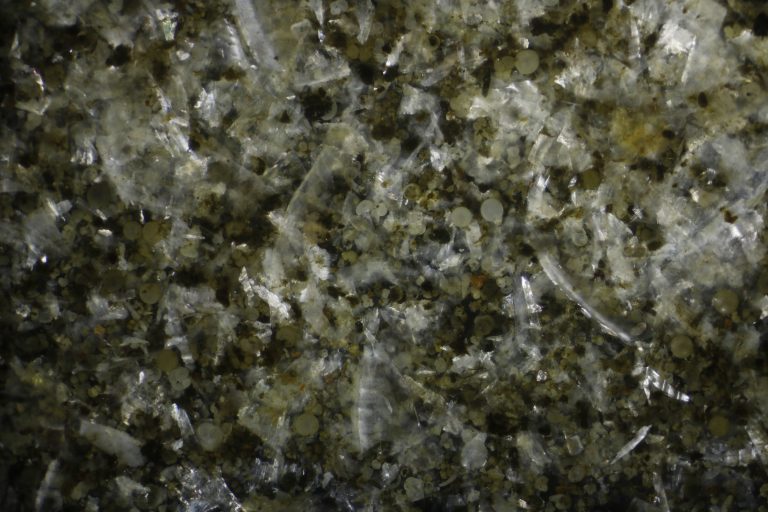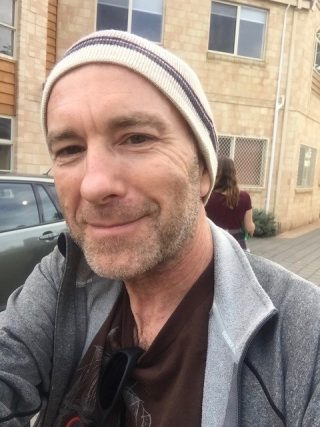The Remotely Operated Vehicle SuBastian is equipped with what we call a “slurp system.” It is a long flexible hose with a nozzle that can be used to suck up things from the seafloor into canisters on the ROV. There are eight canisters, and these can be rotated in turn so a variety of samples can be taken without mixing them up. We routinely use the slurp system for things that are not easy to pick up with the manipulators. This might be delicate fragile creatures or small organisms living on rocks or other animals. Sometimes we just slurp a whole lot of sediment, and then the goal is to see what is living within that we can not see from the ROV. Each slurp chamber has a mesh on the outlet to keep the creatures in and let the water go out. For this cruise we have four canisters with coarse mesh of about 2 mm and four with finer mesh of about 0.5 mm.
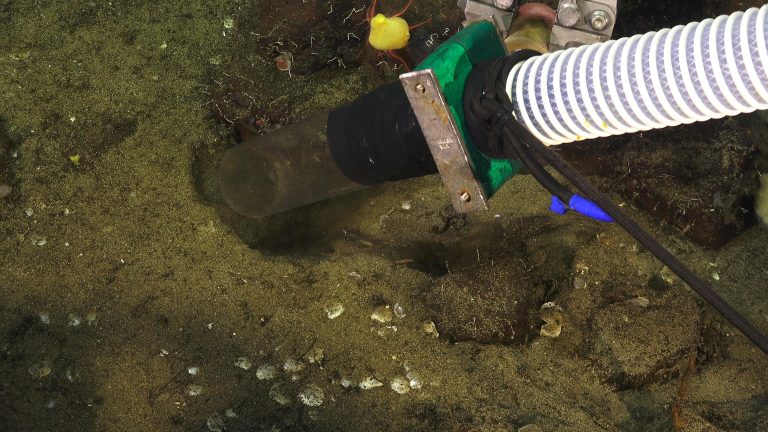
When SuBastian is recovered, the eight slurp canisters are the first things to be removed. We rush them to the lab and put them in the 4°C fridge to keep cool until we can work on them. We almost always will take a sediment sample or two. Here is the canister filled with sediment and shell debris that we slurped in a low oxygen area in the first picture:
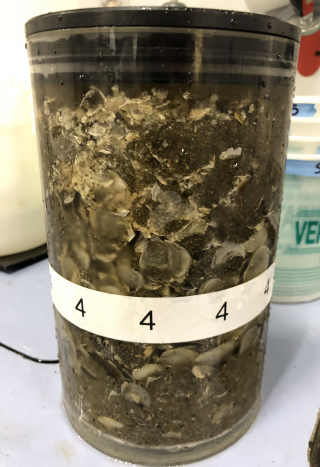
To find the animals we then have to suspend the sediment and shells in a bucket of cold water that we swirl, and then pour through a sieve. The animals sink more slowly than the shells and sediment, so they end up on the sieve mesh. We then rinse the sieve off into dishes and look for creature using a stereomicroscope. The animals are found with the microscope and then removed into clean, chilled seawater. This can take a while as there is often not a high biomass in these slurp samples and the creatures are small, often only 1 mm or so long. Once the slurp is sorted through, the animals are then grouped into morphospecies, then photography and preservation begins. All the animals will end up being archived into museum collections at Scripps Institution of Oceanography or the University of Costa Rica.
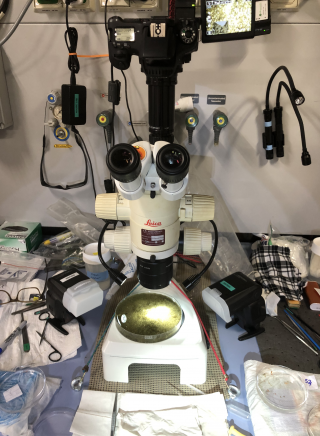
While we are naturally impressed by the larger creatures that we see via the cameras on SuBastian, there is a large amount of biodiversity that we can not see. We have microbiologists with us who are exploring the microbial domain, but there are also many kinds of small animals that we need to find as well if we want to properly understand the biodiversity of our study sites. In fact, comprehensive biodiversity surveys have shown that the majority of marine invertebrate species are small, much less that 1 cm as adults. Almost all of the animals we find fall into three major groups; molluscs, crustacea, and annelid worms.
